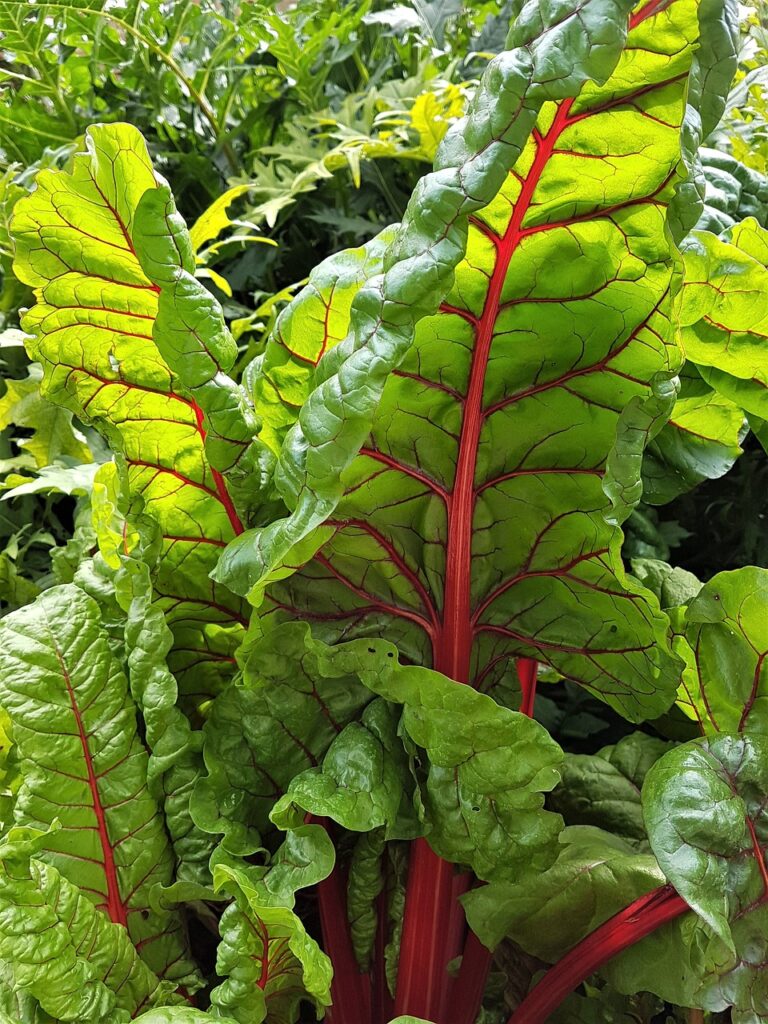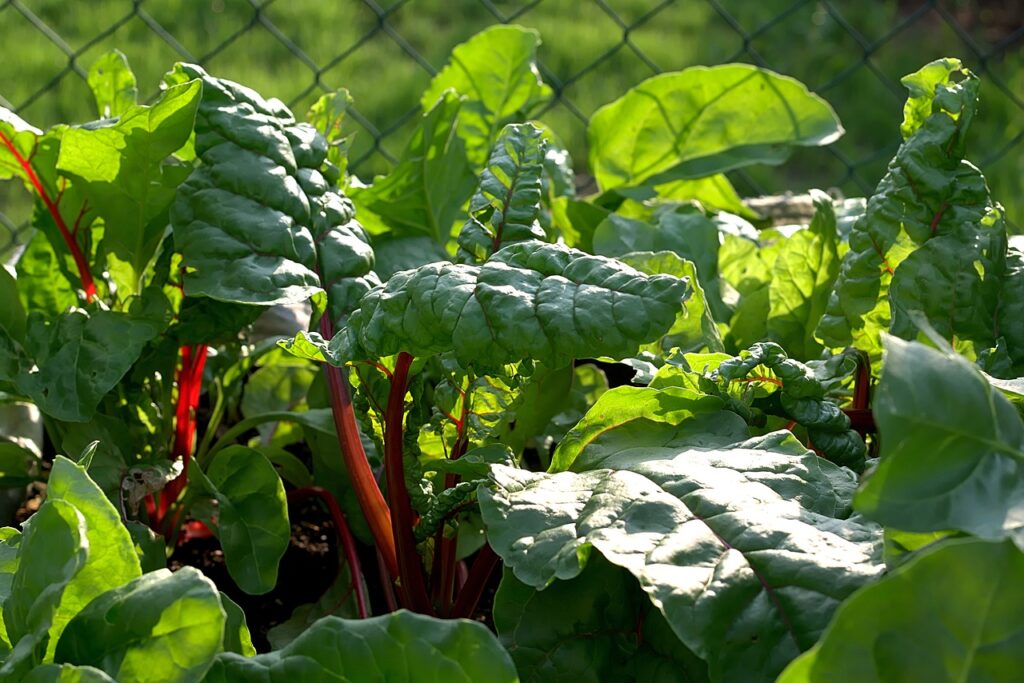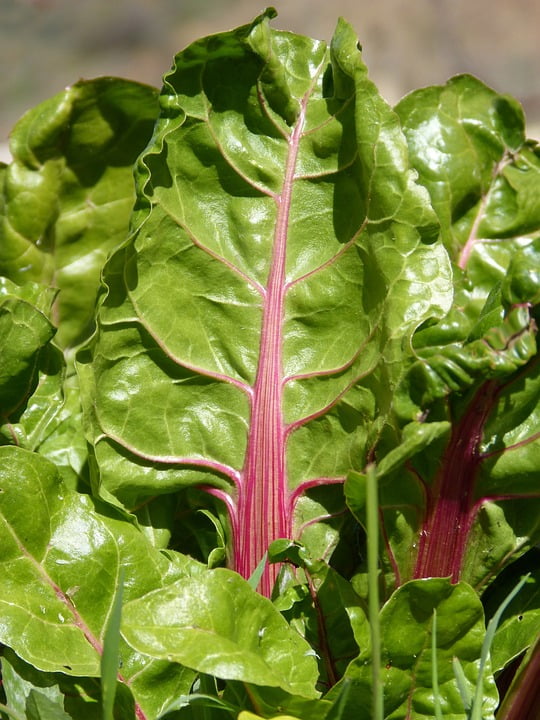Swiss chard, with its vibrant green leaves and colorful stalks, is a versatile leafy green vegetable prized for its mild, earthy flavor and impressive nutritional profile. However, sometimes you might encounter a batch of Swiss chard that tastes unpleasantly bitter. Don’t despair! This bitterness has several potential causes, and with a little knowledge, you can easily fix the problem and enjoy the full flavor potential of this delicious veggie.
What Triggers the Bitterness in Swiss Chard?
Swiss chard has a naturally occurring compound called geosmin, which contributes slightly to its flavor profile. This bitterness is usually mild and pleasant, but certain factors can intensify it. Let’s look into the seven main culprits behind bitter Swiss chard:
1. Stressful Growing Conditions
Swiss chard thrives in cool, moist environments. When stressed by hot weather, lack of water, overcrowding, or bolting (flowering), the plant produces more geosmin, leading to bitter leaves. Here’s how these stressors manifest:
- Hot and Dry Weather: As temperatures rise and water becomes scarce, Swiss chard plants go into stress mode. This triggers increased production of geosmin, making the leaves taste bitter.
- Overcrowding: When crammed together, Swiss chard plants compete for resources like water and sunlight. This stress leads to stunted growth and increased bitterness.
- Bolting: Bolting is the natural process of flowering in Swiss chard. While the flowers are edible, the leaves become tough and significantly more bitter.
Solutions for Stressful Growing Conditions:
- Water Regularly: Ensure consistent and adequate watering for your Swiss chard plants, especially during hot weather. Aim for deep watering that reaches the root zone.
- Maintain Proper Spacing: When planting Swiss chard seeds or seedlings, follow recommended spacing guidelines to avoid overcrowding.
- Provide Shade During Hot Weather: If you live in a hot climate, consider using shade cloth to protect your Swiss chard from intense afternoon sun.
- Harvest Before Bolting: Keep an eye on your Swiss chard plants and harvest the leaves before they reach the bolting stage (flowering).

2. Harvest Time Matters
The age of Swiss chard leaves significantly impacts their taste. Here’s what to consider:
- Young Leaves: Very young Swiss chard leaves might have a slightly bitter taste. However, this bitterness is usually mild and becomes less noticeable as the leaves mature.
- Ideal Harvest Time: For the best balance of flavor and texture, harvest Swiss chard leaves when they are around 6-8 inches long. This ensures mature leaves with a mild, pleasant flavor.
- Overgrown Leaves: As Swiss chard leaves mature beyond their prime, they can become tough and bitter. Aim to harvest before they reach a length of 12 inches.
Solutions for Harvest Time Issues:
- Harvest at Peak Maturity: Aim to harvest Swiss chard leaves when they are around 6-8 inches long, offering the best balance of flavor and texture.
- Start Small, Harvest Often: Regularly pick a few mature leaves from your Swiss chard plants throughout the growing season to encourage continuous growth and prevent leaves from becoming overgrown.
3. Variety
While most Swiss chard varieties have a similar flavor profile, some might naturally have a slightly more bitter taste. This bitterness is usually mild and a matter of personal preference. Don’t hesitate to experiment with different varieties to find your favorite.
Solution for Variety
- Experiment with Different Varieties: If you consistently encounter bitterness with a specific Swiss chard variety, try planting different varieties known for their milder flavor, such as “Ruby Red” or “Lucullus.”
4. Cooking Method Plays a Role
Overcooking Swiss chard can intensify its bitterness. Here’s how cooking techniques can affect flavor:
- Sautéing: Sautéing Swiss chard for a short time in olive oil with garlic helps bring out its natural sweetness without extracting bitterness.
- Boiling: Boiling Swiss chard for extended periods can leach out water-soluble vitamins and minerals, while also concentrating bitterness. Opt for blanching (brief boiling) if necessary.
- Steaming: Steaming is a gentle cooking method that preserves nutrients and helps retain the mild flavor of Swiss chard.
Solutions for Cooking Method:
- Sautéing is Your Friend: Sauté Swiss chard for a short time in olive oil with garlic or other herbs to bring out its natural sweetness and avoid overcooking.
- Blanching as an Option: If a recipe calls for boiled Swiss chard, blanch it instead. Blanching involves briefly boiling the leaves in water and then immediately plunging them into cold water to stop the cooking process. This method preserves nutrients and minimizes bitterness.
- Steaming for Gentle Flavor: Steaming Swiss chard is another excellent option to retain its delicate flavor and vibrant color.

5. Soil Conditions Can Affect Taste
Nutrient deficiencies, particularly nitrogen deficiency, can contribute to bitterness in Swiss chard. Here’s how soil plays a role:
- Nitrogen Deficiency: Nitrogen is crucial for healthy plant growth and flavor development. If your soil lacks nitrogen, Swiss chard plants may produce smaller leaves with a bitter taste.
- Soil Testing: A simple soil test can reveal nutrient levels in your garden. Based on the results, you can amend your soil with organic matter or nitrogen fertilizer to improve plant health and flavor.
Solutions for Soil Conditions:
- Test Your Soil: Conduct a simple soil test to determine the nutrient levels in your garden.
- Amend the Soil: If your soil test reveals a nitrogen deficiency, amend the soil with organic matter like compost or aged manure, or consider using a slow-release nitrogen fertilizer specifically formulated for vegetables.
6. Watering Issues: Too Much or Too Little
Both underwatering and overwatering can negatively impact the taste of Swiss chard:
- Underwatering: Just like with hot weather, a lack of water stresses Swiss chard plants and increases geosmin production, leading to bitterness.
- Overwatering: Waterlogged soil can damage Swiss chard roots and hinder nutrient uptake. This stress can also contribute to bitterness in the leaves.
Solutions for Watering Issus:
- Water Deeply and Consistently: Water your Swiss chard plants deeply and regularly, allowing the soil to dry slightly between waterings. Avoid shallow watering, which encourages surface roots that are more susceptible to drying out.
- Mulch for Moisture Retention: Apply a layer of organic mulch around your Swiss chard plants to help retain moisture in the soil and reduce evaporation.
- Ensure Proper Drainage: Swiss chard thrives in well-draining soil. If your soil is prone to waterlogging, consider raised beds or amending the soil with coarse sand to improve drainage.
7. Contamination (Less Likely Cause)
In rare cases, Swiss chard bitterness might be caused by pest infestation or disease. However, this is less likely than the previously mentioned factors. Regularly inspect your plants for signs of pests or diseases and address them organically whenever possible.
Solutions for Contamination Issues
- Inspect Regularly: Regularly inspect your Swiss chard plants for signs of pests or diseases like aphids, caterpillars, or fungal infections.
- Organic Pest Control: If you identify pests or diseases, address them organically whenever possible. This might include using insecticidal soap, neem oil, or introducing beneficial insects to your garden.
Enjoying Delicious Swiss Chard: Recipes and Tips
Now that you’re armed with the knowledge to prevent and fix bitter Swiss chard, here are some tips and recipe ideas to help you enjoy this versatile vegetable:
- Pair with Acidity: The bitterness of Swiss chard can be masked by pairing it with acidic ingredients like lemon juice, balsamic vinegar, or tomatoes.
- Creamy Sauces are Your Ally: Creamy sauces, made with milk, cheese, or yogurt, can help mellow out any bitterness in Swiss chard.
- Garlic is a Flavor Booster: Sautéing Swiss chard with garlic adds a savory depth of flavor that complements the vegetable nicely.

Recipe Ideas:
- Sautéed Swiss Chard with Garlic and Lemon: This simple recipe allows the natural flavor of Swiss chard to shine through, with a touch of acidity from lemon juice to balance any bitterness.
- Creamy Swiss Chard Pasta: This comforting dish features Swiss chard cooked in a creamy sauce with Parmesan cheese, perfect for a satisfying vegetarian meal.
- Swiss Chard and Ricotta Frittata: A delicious and protein-packed breakfast option, this frittata incorporates Swiss chard leaves and ricotta cheese for a flavorful and healthy start to your day.
- Swiss Chard and Sausage Stuffed Shells: These large pasta shells are filled with a flavorful mixture of Swiss chard, Italian sausage, and ricotta cheese, making for a hearty and satisfying main course.
Wrapping Up
Swiss chard is a delicious and nutritious leafy green that deserves a place in your garden and on your plate. However, you need to understand the factors that contribute to bitterness and implement the right solutions to ensure that your Swiss chard dishes are consistently flavorful and enjoyable. So, don’t be discouraged by the occasional bitter encounter! With a little know-how, you can transform even the most bitter Swiss chard into a delightful culinary experience.

